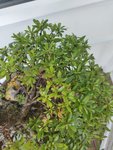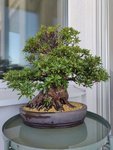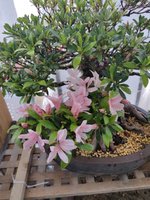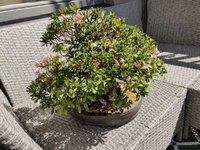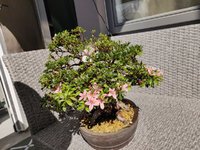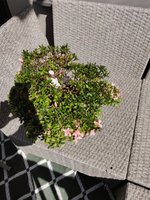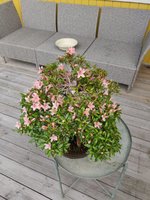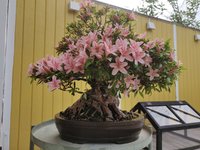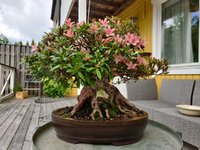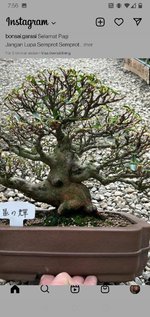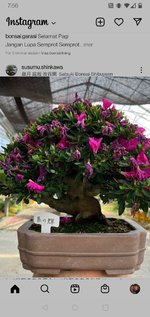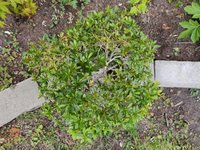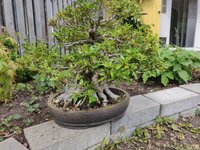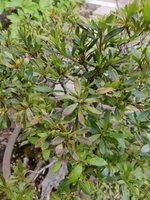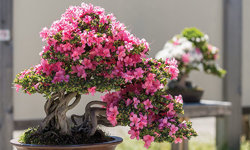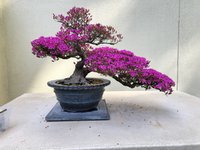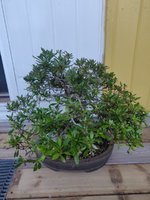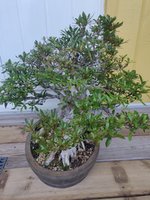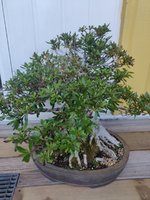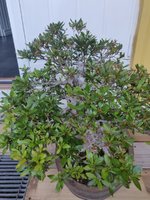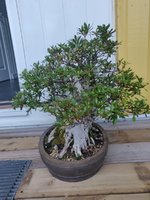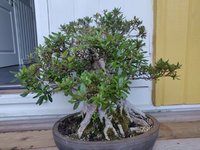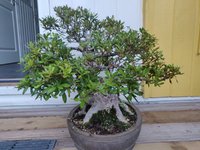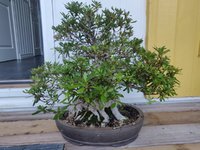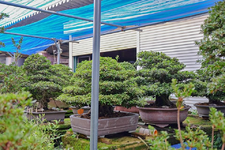Now that you have a healthy tree, I’d like to add a couple notes For you to ponder. There are a couple things going on with your azlaea, all good, yet the6 likely need to be attended to for the trees’ overall health, stylistically and to redevelop the apex.
A couple thoughts.
First the tree, like all Nyohosen and many azaleas, is pushing out growth wherever it can.
The key things each and every branch and branchlet needs is sun and sap/energy flow to survive. Since azaleas a basally dominant, he lower branches try to hog the energy flow, at the expense of the apex.
Each flower site pushes out 4-6 branchlets. If unpruned the tree starts developing multiple ‘cartwheels’ of branches from each from site. This causes a sun blocking canopy that shades the inner branches, thickens the junction itself as lots of sap has to flow through, disrupts the flow and hogs the resources…. especially if located on the lower 2/3 of the tree or at branch tips.
Also sucker branches emanate from the trunk in random spots. These can be a good thing, if one needs to create a new branch, otherwise these pull resources away from the rest of the tree, shade out important inner branching and disrupt the design flow.
Finally adventitious buds push forth multiple branchlets whenever the branch gets enough sun and resources. These can be a good thing for creating ramification, yet a bad thing if they are shaded out by a canopy crowded by cartwheel branchlets.
So what does this mean for this tree?
The outer canopy is shading the interior and lower 2/3 of the tree hogging the energy.
Also…The interior branches are being crowded and shaded, weakening and dying off, disrupting the ramification
The solution to this situation will take a couple three years to accomplish. The tree needs to be simplified to two branches at each junction styling each branch into a pad. This will force the structure to be made up of multiple tiers, allowing air flow and sunlight into the interior.
Also the basal regions need to be pushed in.
Here is an example of a tree I’ve been working on for two years. The apex was weak, the overall energy was low, the tree was crowded and all the strength was on the edge of the canopy. Over the next two years the apex will be pushed in. One of these days I’ll get around to posting this tree on a thread. Or not.
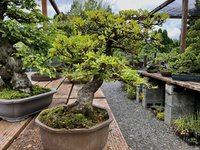
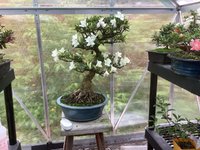
cheers
DSD sends

